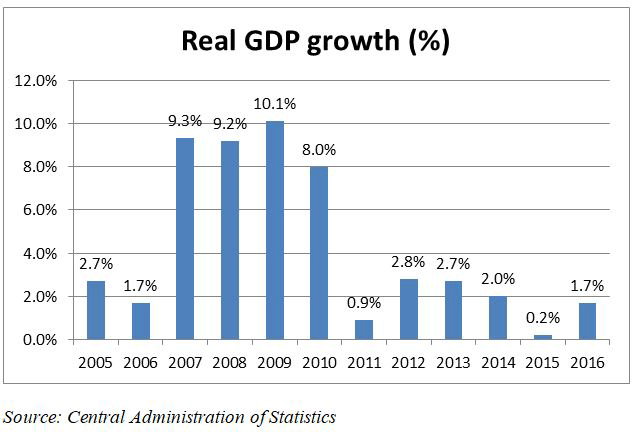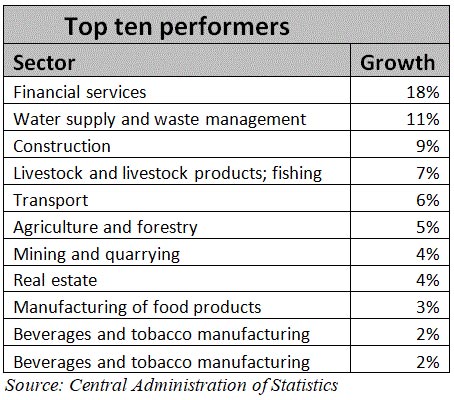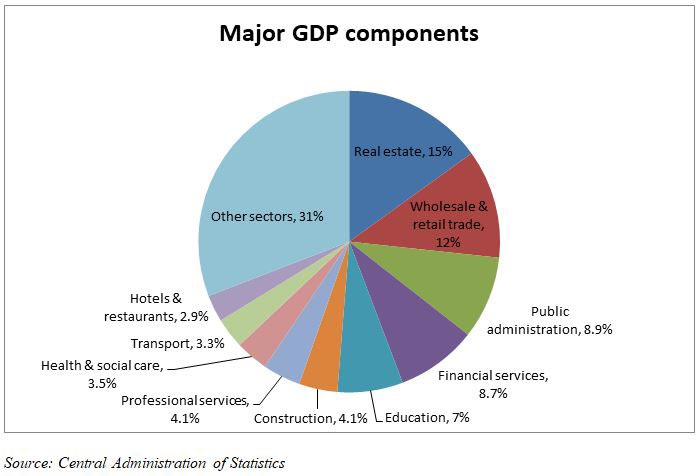GDP rises 1.7 pct in 2016
Financial services up 18 pct
Central Administration of Statistics releases National Accounts
| Share |
|

|
|

|
|
|
|
GDP reached $51.5 billion in 2016, propelled by a real growth rate of 1.7 percent, according to the ‘National Accounts’ report recently released by the Central Administration of Statistics (CAS).
The World Bank, the Central Bank, and Bank Audi had estimated GDP growth of two percent. The International Monetary Fund (IMF) had projected a real growth rate of one percent.
The GDP growth in 2016 was an improvement from 2015, when real growth was just 0.2 percent.
GDP was growing at an annual average of 9.2 percent from 2007 to 2010. The economy slowed drastically in 2011, when the Syrian crisis began. The real growth rate plummeted to 0.9 percent that year, a precipitous drop from eight percent the previous year.

![]()
Increased demand, whether in consumption or investment, usually leads to a greater increase in imports than in GDP in Lebanon, according to Statistician and Economist Robert Kasparian.
The financial services sector, which accounts for 8.7 percent of GDP, had the highest rate of growth in 2016, expanding by 18 percent from the preceding year.
According to the CAS report, the escalation of the Syrian war caused a slight deceleration in the financial sector’s growth in 2011. This was followed by a quick upturn between 2012 and 2014, albeit at a slower pace.
The second largest increase, amounting to 11 percent, was realized by the water supply and waste management sector, which represents just 1.2 percent of GDP.
The real estate sector, which makes up the largest chunk of the GDP—amounting to 15.1 percent—grew four percent.
Kasparian said that the financial services sector and owner-occupied residential units are somewhat overestimated in the calculation of GDP due to the methodology adopted in recent years. This could inflate GDP growth to a certain extent, he said.

![]()
Wholesale and retail trade, the second largest component of GDP (11.6 percent), declined five percent.
Manufacturing industries have been in a downturn since 2014. The manufacturing of chemicals, rubber and plastics dropped 11 percent in 2016. Textile and leather manufacturing fell 12 percent. Metal products, machinery and equipment plummeted 18 percent. These three subsectors, however, account for just 3.4 percent of GDP.

![]()
According to the CAS report, inflation as measured by the GDP deflator decreased gradually from 6.9 percent in 2012 to 1.4 percent in 2016.
Reported by Shikrallah Nakhoul
Date Posted: Jun 05, 2018
| Share |
|

|
|

|
|
|
|